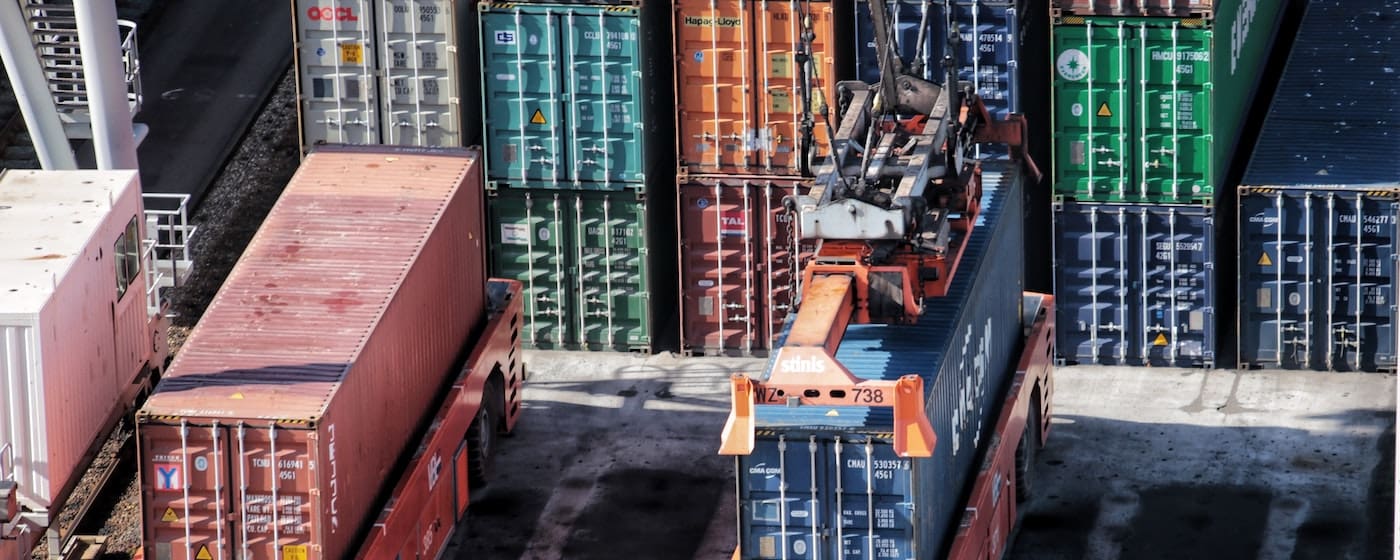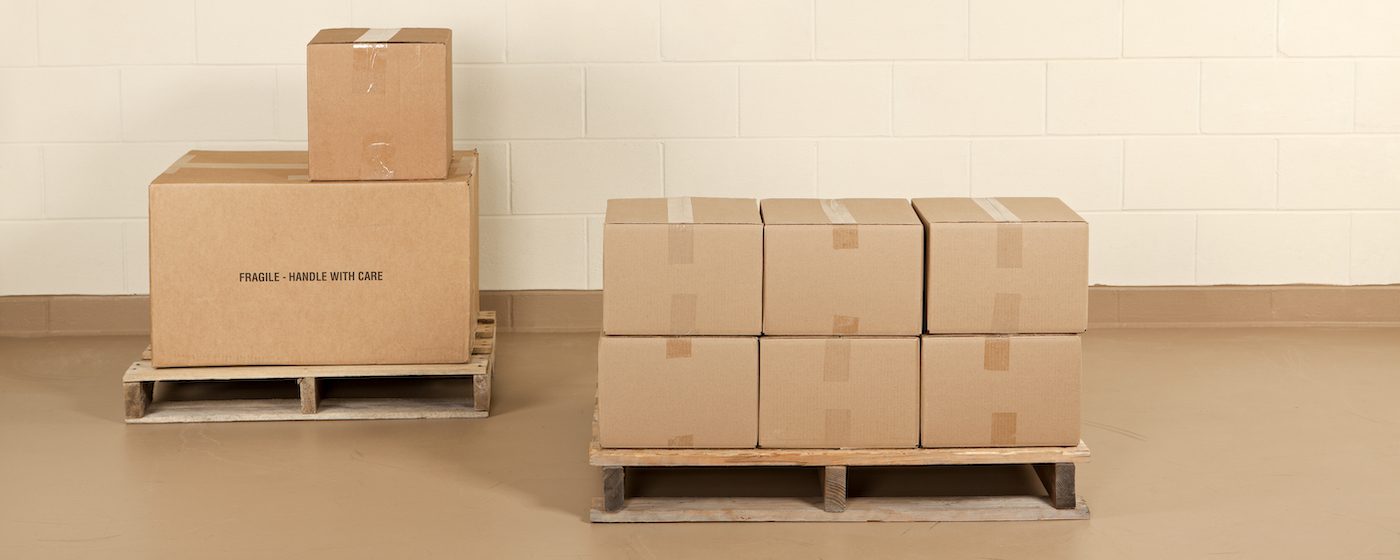Table of Contents
** Minutes
What is a transportation management system (TMS)?
For your supply chain to function seamlessly, you need to keep tabs on it to make sure that every aspect is working as it should. This involves carefully planning your delivery routes and efficiently managing your deliveries so that customers can receive their orders on time.
In order to do this, you’ll want to make sure that drivers are assigned to the most efficient routes to keep costs low while ensuring timely deliveries. Additionally, you’d want to keep track of whether those deliveries are taking place as planned or if there are any delays so you can quickly jump in with a solution.
That’s where transportation management systems, or TMS, comes in. TMS provides businesses with a clear view of how the supply chain is functioning and enabling them to manage it effectively.
In this post, we’ll take a closer look at what a transportation management system is, why it’s important, and how you can choose a provider. You’ll also get a quick comparison of the top providers to make your search easier.
What is a transportation management system (TMS)?
A transportation management system (TMS) is a platform that enables businesses to effectively manage and oversee the physical movement of goods within their supply chain. It is typically a part of a larger supply chain management system and allows them to organise and centralise all their logistics and transportation functions.
Transportation management systems can perform a variety of functions. Businesses can use them to:
- Get visibility into their day-to-day transportation operations
- Plan and optimise delivery routes
- Forecast and plan transportation needs
- Manage multiple couriers in one place
- Share compliance information and documentation
- Execute shipments and keep track of them
- Manage necessary payments and settle invoices
- Report on important performance metrics
What does transportation management software do?
Most transportation management software solutions offer a comprehensive set of features that allow you to manage all your logistics and transportation functions in one place.
Generally, transportation management software comes with the following features:
Load planning
This allows you to plan the loading space of your containers, trucks, and trailers so you can make the most of the available space while considering the maximum weight that each vehicle is capable of carrying. You’ll need to enter the measurement and capacity information for each vehicle and then use this in combination with your item dimensions to effectively plan loads. It then helps you distribute orders effectively between available delivery vehicles.
Route planning and optimisation
Some TMS platforms also come with powerful route planning capabilities, which involve finding the most efficient way to deliver all your orders. This helps you to cut down any inefficiencies in your routes so that you can make more deliveries without compromising speed. Moreover, this enables you to save on fuel and labour costs, helping to increase your bottom line.
Load execution
Transportation management systems also enable you to automate your freight tendering process. They can digitally tender loads based on the routing guide to the right couriers, so you don’t have to go through this process manually. By automatically dispatching couriers, you can significantly expedite steps such as booking and tendering of freight.
Fleet/courier management
For businesses that operate their own fleet, some TMS platforms also come with the capability to manage their fleet. While generally not as robust as dedicated fleet management software, the TMS will be able to let you assign drivers, schedule vehicles, and manage dispatch. If you’re using third-party couriers, the TMS platform allows you to easily find rates, measure their capacity, and select the ideal couriers for each shipment.
Documentation management
The transportation process can be extremely document-heavy, often requiring multiple documents, forms, and compliance information. A transportation management system allows you to automate some parts of your document management to improve efficiency. You can use it to quickly generate bills of landing, conduct freight auditing, and create invoices. A TMS also helps you to easily share relevant import and export documentation to ensure that your shipments are trade compliant.
Tracking and visibility
One of the key features of a TMS is the ability to access detailed tracking information on the movement of goods throughout the supply chain. You can get real-time updates about your freight while also getting a better idea of your courier performance.
Payment management
With a TMS, you can also efficiently manage your payments across different couriers and suppliers. You’ll be able to review each courier invoice and automatically make payments when they’re due.
Reporting
One of the best parts about a TMS is the ability to access actionable reporting. You can get in-depth reports on the performance of your networks and facilities. This can then inform your optimisation strategies to help you reduce costs while improving efficiency.
TMS vs WMS
Both a TMS and a warehouse management system (WMS) are important aspects of supply chain management. However, a TMS is dedicated to managing activities taking place outside of the warehouse while a WMS is dedicated to the internal management of the warehouse. The functionalities of a TMS allow you to manage transport activities while the functionalities of a WMS allow you to manage warehousing tasks and activities.
Who uses a TMS?
In general, transportation management systems are mostly used by businesses that need to ship and/or receive physical goods on a regular basis. This mainly includes ecommerce businesses, manufacturing companies, retail distributors, wholesale businesses, retailers, and third-party logistics providers.
Pros and cons of using a TMS
Using a transportation management system can result in a ton of benefits. However, there are also some drawbacks to consider before you decide to invest in one. Let’s find out the key benefits and disadvantages of using a TMS.
Pros
- Streamlines the entire process of monitoring and managing your supply chain
- Helps to minimise cost–both for the business and the end consumer
- Allows for automation to improve efficiency and accuracy
- Brings you better supply chain visibility
- Helps you maintain trade compliance, which minimises shipping delays and expensive penalties
- Reduces late deliveries and the need for manual tasks, enabling you to save time
- Lets you deliver better customer experiences with real-time updates and timely deliveries
- Allows you to track freight movement in one place
- Makes it easy to share data and documentation with couriers and other trading partners
Cons
- Challenging to organise quotes from multiple couriers and get the best rate for each shipment
- Difficulty in comparing multiple couriers to select the best option
- Route management capabilities are often limited and therefore, may result in inefficiencies
- Complicated to track multiple shipments
How to choose a TMS provider
At the most basic level, the TMS platform you choose should be cloud-based and should come with the necessities. This would include letting you plan your loads, tender freight, upload a routing guide, track shipments, report on performance, and handle your accounting needs. Additionally, the steps below will be able to help you narrow down the best TMS provider for your business.
Consider your goals and needs
Initially, you must start with a clear idea of what you need specifically as a business. The ideal TMS provider for you will rely heavily on this information. Consider the size of your operation to understand your network needs. Then try to figure out what business problems you need the TMS to solve.
It’s also important to clearly lay out the data that you absolutely want it to capture. That way, you can automatically rule out any provider that doesn’t offer the data you need. Finally, you’ll also want to think about how much you’re willing to spend so you can set a proper budget and stick with it.
Look for a powerful optimisation engine
While many TMS solutions in the market come with comprehensive features, few are equipped with optimisation engines. Look for a provider that offers the ability to optimise your loads and routes as well as enables you to select the ideal courier.
Prioritize courier contracts management
If you’re dealing with multiple couriers, the TMS platform should also be able to consolidate your courier contracts in one place. It should be able to simplify the preferential terms in your contracts so you can keep track of important details. You should be able to effectively keep track of transit times, lanes, zones, and agreement expiration dates across all your contracts.
Think about integration capabilities
One key aspect you should never compromise on is integration. The TMS solution you choose should be able to seamlessly integrate with leading WMS and ERP systems. If you’re already leveraging existing systems, make sure to look for a TMS platform that will work with them.
How much does TMS cost?
The cost of transport management systems varies depending on a number of factors including the size of your operation and the type of TMS you choose. Cloud TMS systems will typically cost anywhere between $1 and $4 for each freight load that you book into the system. This makes it an ideal option for businesses with smaller operations as they can better manage their cost according to their needs.
For licensed TMS, you can expect to spend anywhere between $10,000 and $250,000. Besides this, there will be additional maintenance costs incurred on an annual basis. This type of TMS is ideal for larger operations that have massive loads.
Top TMS providers compared
Now to make your search for the ideal TMS provider easier. Let’s take a look at some of the leading TMS providers in the market.
MyCourier TMS
This TMS lets you streamline and automate your shipping processes with auto-generated shipping documents and auto-populated order details. You can use it to quickly compare rates and shipping times across various couriers and easily measure courier performance.
Key features
- Courier selection
- Fleet tracking
- Order tracking
- Quick rate comparison
- Shipment reports
- Vendor availability
Descartes Aljex
This SaaS-based transportation management system is ideal for 3PLs and brokers and makes it easy to find the best couriers and rates for each shipment. You can use it to efficiently manage shipment documents, generate quotes, and monitor performance.
Key features
- Courier information
- Courier evaluation
- Courier performance tracking
- Freight pricing
- Freight selection
- Customer document management
GoComet
GoComet is a multi-modal logistics platform that allows you to automate your end-to-end logistics. You can use the AI-powered platform to procure freight rates, get real-time visibility on freight movement, and automate your shipment workflow.
Key features
- Freight rate procurement
- Freight invoice reconciliation
- Real-time container tracking
- Courier evaluation
- Courier performance tracking
- Customer management portal
Freightview
Freightview is another multi-modal TMS platform, which not only pulls up your pre-negotiated rates but also lets you interact directly with your courier partners. The platform makes it easy to compare your options, access relevant shipping documents, and schedule pickups.
Key features
- Courier evaluation
- Courier performance tracking
- Freight selection
- Quick rate comparison
- Vendor availability
- Shipment reports
Cargobase
This cloud-based TMS simplifies your shipping management by letting you compare couriers and measure their performance. You can use it to choose the optimal freight mode and get real-time visibility into your freight movement.
Key features
- Courier evaluation
- Courier performance tracking
- Freight selection
- Courier selection
- Fleet tracking
- Customer document management
ShipBob is more than a TMS
While these leading TMS platforms are pretty comprehensive when it comes to logistics and transportation management, ShipBob does a bit more than that. The ShipBob transportation management system is built into our warehouse management system. This means that your entire supply chain management is integrated into one platform so you can get end-to-end supply chain visibility.
Generally, TMS platforms are great but need to be used alongside other systems to manage your supply chain better. ShipBob simplifies this for you without the need to switch between multiple tools and platforms. You can use ShipBob to easily compare rates between various couriers, making it easier to decide the best way to ship out each order.
Moreover, the algorithm helps you decide the cheapest and fastest route for every order. That way, you can automate your route planning and keep your costs low without sacrificing fulfilment speed. This makes ShipBob the ideal ecommerce delivery partner for you if you’re looking to streamline your transportation and logistics management.
Get started with ShipBob
If you’re ready to get started with a global omnifulfilment platform, complete with the technology to streamline your transportation management, request a quote to connect with our team.
Transportation management FAQS
Below are answers to the most common questions about transportation management systems.
What are the benefits of TMS?
A TMS enables you to streamline your supply chain management and gives you better visibility into your day-to-day transportation operations. It lets you automate some aspects of your transportation management, helping you to save time and improve efficiency.
How long does it take to implement a TMS?
A fully integrated TMS will typically take 4-5 months to be implemented.
What are examples of TMS?
MyCourier TMS, Descartes Aljex, and GoComet are some examples of TMS.
How can ShipBob help with transportation management?
When you outsource your fulfilment to ShipBob, you get access to our long list of couriers to handle last-mile delivery. We automatically choose the fastest and cheapest courier every time so you can reduce costs while optimising fulfilment speed.



